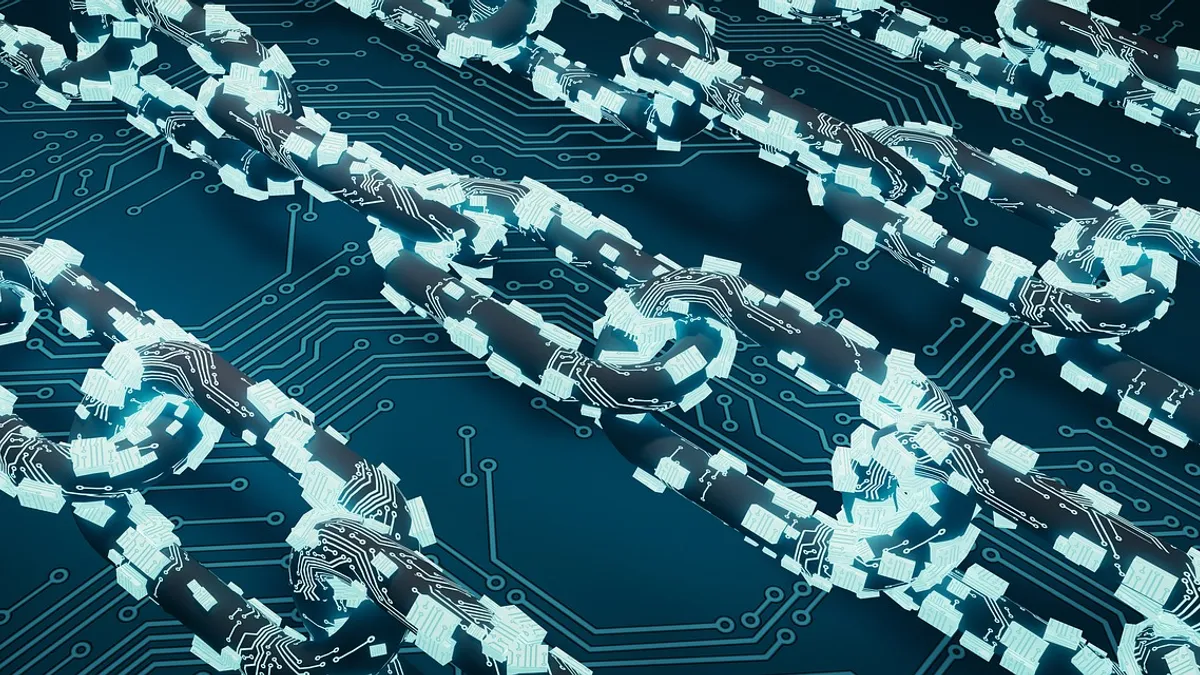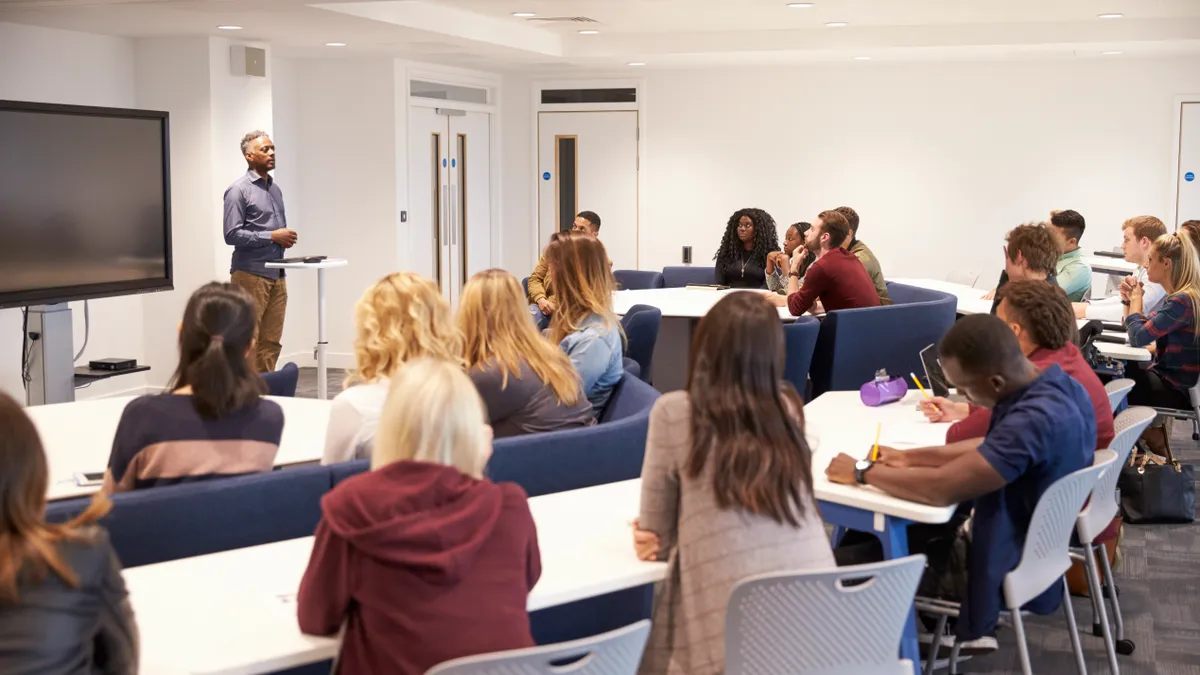Ted Mitchell is the president of the American Council on Education.
Higher education faces unprecedented uncertainty. Colleges and universities across the country are grappling with whether to reopen in the fall or keep instruction online. Students completing their education are graduating into a tumultuous job market, with a stalled economy and record jobless claims. Dreams of economic mobility have been deferred for millions of learners who were pursuing new careers and credentials. The COVID-19 crisis is exposing and exacerbating economic, educational and health inequities.
In periods of economic crisis like this one, higher education typically serves as both a backstop for displaced workers and an engine for economic recovery. But today's crisis is exposing widening fault lines between educational institutions and the demands of an increasingly dynamic world of work.
At the core of that challenge is a disconnect between the ways higher education and the labor market talk about, measure and signal individuals' skills.
This issue is not new. Just months ago, when we were in the midst of the tightest labor market on record, education and business leaders were already concerned about the mismatch between educational outputs and labor market demand.
As of December 2019, four in 10 recent college graduates were underemployed, and black and female graduates were each nearly 10 percentage points more likely to be underemployed than their white and male peers, respectively. Employers were looking beyond a college degree, to assessments and even college alternatives, in order to identify workers with in-demand skills.
Now, as the implications of mass unemployment loom large, the imperative of making good on our collective educational investments takes on new urgency. Addressing issues of interoperability between education and employment are more important than ever.
As we make our way through the crisis and into recovery, that imperative should encourage experimentation with approaches to credentialing (and hiring) that take advantage of new technologies to provide more granular descriptions of skills and to improve communication among education and training organizations, individuals and employers.
Blockchain, in particular, holds promise to create more efficient, durable connections between educational attainment and the demands of work. It can provide the technological fabric to help displaced workers and other learners translate their skills to new education or career opportunities, and it may hold particular value for those who are underserved by the existing education-to-employment paradigm.
The American Council on Education, through a grant from the U.S. Department of Education, has begun a two-year initiative to explore the opportunities and risks of utilizing blockchain to translate skills and educational experiences into a language individuals — and employers — can use. The first phase of this work focused on research that revealed blockchain is already gaining momentum, with at least 71 active use cases across the education-to-workforce landscape.
We found three key areas of opportunity for blockchain to support economic mobility:
Personal data agency
When individuals need to prove their education and work history, they rely on institutions and past employers to verify education and workforce records. But those organizations don't provide consistent access to records, and there is always the risk they may close or lose records. Distributed ledger technologies — which aren't controlled by a single entity — are inherently more transparent, permanent and secure. Blockcerts, for example, is a framework to issue, view and verify credentials, which can then be stored in a digital wallet app that learners can manage and use as a portable profile.
Lifelong learning
To remain competitive in the workforce, individuals will need to continue to learn and document skills over the course of their working lives. As the number and type of credentials — especially those from new, short-term programs — proliferate, learners need more help organizing and verifying different types of learning. Blockchain is ideally suited to this challenge. The state of Colorado, for example, is actively exploring ways to use blockchain to better connect the K-12, higher education and workforce systems and ultimately support learning throughout a person's lifetime.
Connected ecosystems
Even as technology takes over certain processes, the value of human connections and trust remain needed. Connected networks of learners, educators, employers, nonprofits and government agencies can use blockchain infrastructure to provide members with more functionality, control and transparency — and, ultimately, more trust and cooperation. The Dallas County Community College District, the University of North Texas at Dallas, and several local school districts formed a blockchain network to help students, especially low-income and first-generation ones, transition smoothly from one institution to another or into the workforce. This arrangement builds on and expands existing trust and cooperation among the participants, ultimately benefiting learners.
Taken together, blockchain's strengths can help learners capture a more complete picture of what they know and can do, and they can enable more seamless transitions from education to employment (and back) now and in the future.
The COVID-19 crisis will only make learners more mobile, moving in and out of formal education as their job, health and family situations change. This is true for students already in the educational pipeline and for working adults who will soon turn to higher education to retool and reenter the job market.
Our institutions will, likewise, struggle to find their footing in ways that are distinct from previous recessions. More than a handful may close during this period. It's an extreme possibility, but one we must prepare for.
Contemplating it forces us to reconsider institutions' role as the sole owners of student records. For these reasons, we will be issuing the Blockchain Innovation Challenge in the coming months for proposals to foster new ecosystems that can further test blockchain's potential to expand equity and mobility by empowering individuals to better develop and share their skills.
Creativity and experimentation will be essential for higher education to continue to open the doors to opportunity.

















